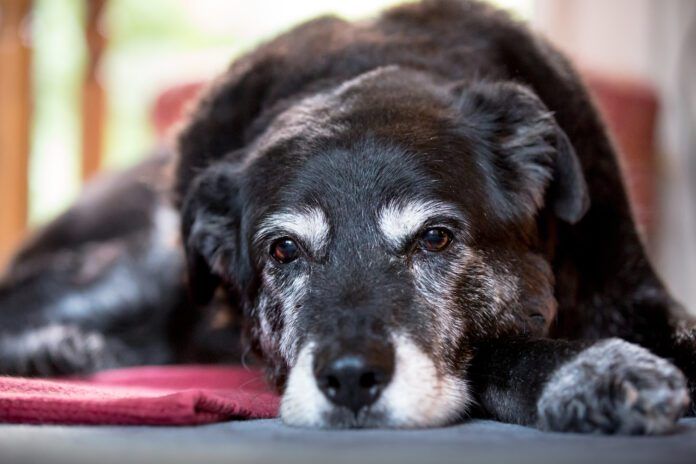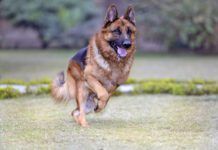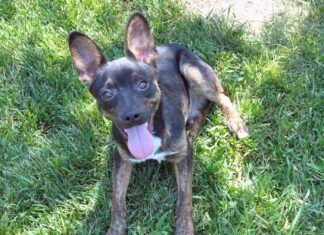If your dog’s eyes are rapidly moving, seeming uncontrolled, your dog may be suffering from nystagmus. It’s usually part of vestibular disease, which is common in older dogs. Your dog may be walking in circles with his head tilted, in addition to the rapid eye movement. He also may have ataxia, which is indicated by a wobbly, unbalanced gait.
The affected dog’s eyes can move rapidly back and forth (horizontal nystagmus), up and down (vertical nystagmus), or even in a circular motion (rotary nystagmus). The movement is involuntary and usually occurs in a steady rhythm. While a mix of movements are possible, most often the eyes move to one side then back.
When anything messes with the vestibular system, which is responsible for the dog’s balance, the dog’s eyes are potentially affected too. Normally, when your dog moves his head, his eyes adjust to the movement. With nystagmus, the eyes move even when the dog’s head is still. Not surprisingly, the dog usually becomes nauseous.
What Causes Nystagmus in Dogs?
The vestibular system is a part of the brain and includes middle and inner ear components. Injuries or infections of the deep ear structures may cause nystagmus. Sometimes something as simple as a thorough ear cleaning at the vet clinic may cause a short bout of nystagmus. Brain lesions such as encephalitis, certain viral infections, and cancers may cause nystagmus as well.
Old dog vestibular disease is generally of unknown cause but appears in senior dogs and usually resolves, or almost completely resolves, in a few days to a week or two. The nystagmus may stop before the head tilt and circling signs subside.
How Do You Treat Nystagmus in a Dog?
There are no “magic eye drops” for this condition. The goals are two-pronged: You want to identify the cause, if possible, and treat it or provide supportive care.
Diagnostics usually start with a thorough physical examination, including looking into the ears. A neurologic exam could provide information about the overall neurological health of your dog. X-rays, bloodwork, and possibly even an MRI may be indicated in some cases. With a senior dog, your veterinarian may suggest that diagnostics can wait while you see if your dog responds on his own.
Treating Nystagmus in Dogs
Supportive care generally requires you keep your dog safe. He can’t move around safely with this condition. Block off steps, go back to leash walks instead of free yard time. Crate him when you are not around.
Your dog will be nauseous, so your veterinarian may prescribe some anti-nausea medications. It is important that your dog eats and drinks. You may need to hand feed and resort to special treats to get him to eat. You can hold the bowls for him if that helps. If he does not drink, the veterinary staff can show you how to give subcutaneous fluids at home.
Most dogs show improvement in 24 to 72 hours. Complete recovery may take two to three weeks. In most dogs, nystagmus will clear first, then the head tilt and circling will end.






